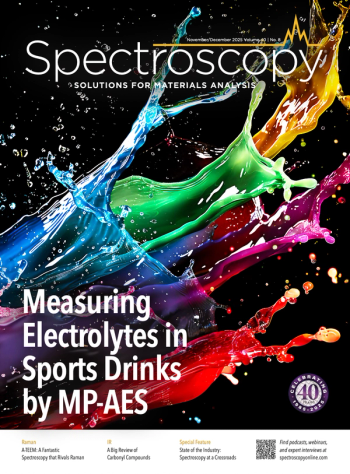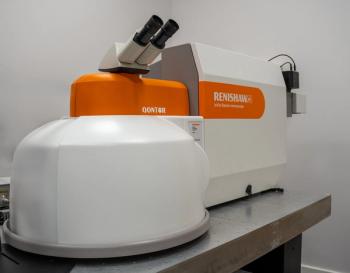Key Points
- A study led by Flavio Odoi-Yorke at Cape Coast Technical University used bibliometric analysis to examine nearly three decades of global research on NIR spectroscopy in biofuel production, highlighting a steady annual increase in output and key contributions from the U.S., China, and Brazil.
- The study found that NIR spectroscopy is widely applied across the biofuel production chain and that integrating machine learning has significantly enhanced its predictive accuracy and analytical capabilities.
- Researchers identified several key areas for future development, including the need for deep learning models tailored to NIR data, standardization of instrumentation and calibration methods, and further exploration of multispectral and hyperspectral imaging for deeper process insights.
A recently published study examined the role that near-infrared (NIR) spectroscopy is playing in advancing global biofuel analysis and production. This study, which was led by researcher Flavio Odoi-Yorke at Cape Coast Technical University in Ghana, conducted a bibliometric analysis to show the evolution, key contributors, and emerging trends in NIR spectroscopy research across the biofuel sector from 1996 to 2023. The findings of this study were published in the journal Infrared Physics and Technology (1).
What is bibliometric analysis?
Bibliometric analysis studies the amount of literature published on a specific topic. It is generally conducted to track current trends in a particular industry, as well as document the progression of a particular topic (2). Bibliometric analysis helps scientists understand a topic or industry better, as well as the emerging areas in the field (2).
In this study, the research team used data from the Scopus database. By employing a robust analytical framework powered by the Bibliometrix package in the software programming language R, the researchers compiled literature from approximately three decades of research. Because of the increased demand for renewable energy sources, the research team wanted to understand what analytical techniques have emerged as leaders in this space. Among the advanced analytical techniques being used to improve production efficiency, ensure product quality, and reduce environmental impact, NIR spectroscopy has emerged as a frontrunner because of its speed, non-destructive nature, and compatibility with real-time monitoring systems (1).
What were the main findings of this study?
According to the findings, NIR spectroscopy has found widespread application across various stages of the biofuel production chain. From the characterization of biomass feedstocks to the monitoring of biodiesel synthesis and the analysis of anaerobic digestion for biogas generation, NIR spectroscopy has proven to be a highly versatile tool (1). The research team highlighted in their review that integrating machine learning (ML) techniques into the NIR spectroscopy data has only enhanced the tool’s effectiveness. ML algorithms have helped improve the accuracy of predictions and the robustness of analytical models (1).
Another aspect of this study was determining what current biofuel research is focused on. The research team noted that current literature has focused on feedstock evaluation, real-time process monitoring, and quality control (1). The study’s citation analysis highlighted the widespread impact of NIR spectroscopy in these areas. The emergence of portable and online NIR spectroscopy systems further points to a future in which real-time, on-site monitoring becomes standard in industrial biofuel facilities (1).
What did the researchers discover about current research gaps?
The researchers also wanted to learn whether there were current research gaps in biofuel research. Based on the findings, the researchers said that there is a need for developing deep learning models tailored specifically to NIR spectroscopy data sets. Although ML algorithms are being used more frequently and offer several advantages, more sophisticated neural network architectures could enable better handling of non-linear spectral relationships and improve prediction accuracy (1).
Additionally, the researchers discuss the emergence of portable and miniaturized NIR spectrometer sensors. These sensors are operating in biofuel production environments, assisting in process control functions (1).
The authors also encourage more exploration into multispectral and hyperspectral NIR imaging. They mentioned that these are techniques that combine spectral and spatial data that can offer deeper insights into feedstock heterogeneity and reaction dynamics (1). Another pressing need is standardization across instruments and calibration procedures. A consistent framework would enhance reproducibility and facilitate inter-laboratory collaboration (1).
Overall, the researchers were able to conclude that research into biofuels has only increased over the past few decades, with the field experiencing an 11.85% annual increase in scholarly output (1). The authors also found out that the main countries driving the research in this field include the United States, China, and Brazil.
With its ability to support real-time, non-invasive, and data-rich assessments, NIR spectroscopy is poised to continue playing a role in advancing current scientific work in renewable fuels.
References
- Odoi-Yorke, F.; Kaburi, S. A.; Sanful, R. E.; et al. A Review of Recent Trends, Advancements, and Future Directions in Near-infrared Spectroscopy Applications in Biofuel Production and Analysis. Infra. Phys. Technol. 2025, 145, 105692. DOI: 10.1016/j.infrared.2024.105692
- Donthu, N.; Kumar, S.; Mukherjee, D.; et al. How to Conduct a Bibliometric Analysis: An Overview and Guidelines. J. Bus. Res. 2021, 133, 285–296. DOI: 10.1016/j.jbusres.2021.04.070




